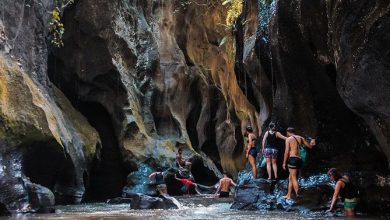
Preparing for Your First Ski Trip: What You Need to Know
It’s exciting to embark on your first skiing trip, but you may feel overwhelmed if don’t know what to expect. There are many steps you can take to make sure that your first ski trip is a fun and safe one. If you are looking for high-quality ski gear from a reputable ski shop, Naski Sports can be a good place to begin your search.
However, if you still want to know what you need when preparing for your first ski trip, this beginner’s guide will walk you through all you need to prepare adequately.
1. Choosing the Right Gear
It is important to choose the right ski gear for comfort and safety. Here are the essentials that you will need:
Skis and Poles
Beginners must choose skis they can easily control. Shorter skis tend to be easier to maintain and make it easier for you to turn. Renting skis at most resorts is a great way to test out different styles and sizes before buying your own pair. The poles must be at the right height. When you place your hand under the basket and hold it upside down, your arm should make a right angle.
Ski Boots
A properly fitted pair of ski boots is essential. The boots should fit snugly but not too tightly, providing support and flexibility while still being snug. Uncomfortable boots can cause discomfort and make it difficult to control your skis. Wear the socks that you will be skiing in when trying on boots. Also, make sure your toes can move without feeling pressure.
Ski Helmet
A ski helmet is essential for safety on the slopes. Make sure your ski helmet fits properly and doesn’t obstruct your vision. For comfort, it should have good ventilation and insulation.
Ski Clothing
Dressing for cold, wet weather is essential. To stay warm and dry, layering is essential.
- Base layer: Begin with a moisture-wicking base to keep sweat off your skin.
- Mid layer: To retain body warmth, add an insulating middle layer, such as a down or fleece jacket.
- Outer layer: Protect yourself from the elements with a waterproof and windproof jacket and pants.
Accessories
Do not forget to include the essential small accessories.
- Ski Goggles: Protect your eyes against wind, snow and UV rays. Select goggles that have lenses that are suitable for the light conditions on the slopes.
- Gloves: Waterproof and insulated gloves will keep your hands dry.
- Socks: Choose moisture-wicking socks for skis that provide warmth and cushioning without being bulky.
2. Planning Your Trip
After you have sorted out your gear, plan your trip. Here are a few key things to keep in mind:
Selecting a Ski Resort
It’s a good idea to pick a ski resort that is geared towards beginners for your first trip. You should look for ski resorts that have a wide range of green slopes (for beginners) and offer lessons. Courchevel, Vail, and Whistler Blackcomb are all popular resorts for beginners.
Booking Lessons
Booking lessons if you are new to skiing is essential. Professional instructors will teach you how to use the ski lifts safely and how to stop, turn and stop. The group lessons are an affordable option that also allows you to meet other newbies.
Accommodation
Consider the proximity of your accommodation to ski slopes and lifts when choosing an accommodation. It can be convenient to stay at a resort that offers ski-in/ski-out, especially if you plan to take frequent breaks during the day. Staying in a town near the ski slopes might be more affordable, and there are shuttle services available to get you to and from them.
3. What to pack
Planning your ski trip is essential to ensuring you are prepared. Check out this checklist to ensure you’re packing efficiently.
Clothing
- Ski jackets and pants: Waterproof, insulated.
- Base layers: Tops or bottoms made from merino wool, a synthetic material.
- Mid layers: Fleece vests or fleece jackets.
- Ski socks: At least two pairs of socks, preferably moisture-wicking.
- Gloves and mittens: Waterproof, insulated.
- Neck gaiter: Protects your neck and face against the cold.
- Hat (beanie): For wearing when you are not on the slopes.
- Casual clothing: For evenings spent in the lodge, or when exploring the resort.
Accessories
- Goggles: With lenses that are suitable for the weather conditions.
- Helmet: Bring your own if you don’t want to rent one.
- Sunscreen lip balm: High-SPF to protect from sunburn even in winter.
- Ski pass: If purchased in advance.
Miscellaneous
- Backpack: Ideal for carrying water, snacks and extra layers.
- Camera or GoPro: To capture memories of your trip.
- Travel insurance: Make sure that it covers winter sports.
4. Safety on the Slopes
Your safety should be your top priority when you are on a ski trip. Here are some safety tips:
Know the Rules
Learn the basics of skiing, including how to stop in safe and visible places, maintain control of your speed, or yield to the skier going downhill.
Take Breaks
It is physically challenging to ski, especially for beginners. Listen to your body and take regular breaks. When you feel tired, it is time to stop.
Stay Hydrated
Even though it is cold, it is easy to dehydrate while skiing. Stay hydrated by drinking plenty of water.
Conclusion
Planning your first ski trip requires careful planning. From selecting the right equipment to packing all the essentials, you need to be prepared. This guide will help you have a memorable and safe experience on the slopes. It’s important to remember that it is not only about the equipment but also being prepared and safe. Your first skiing trip will be unforgettable if you prepare properly.





